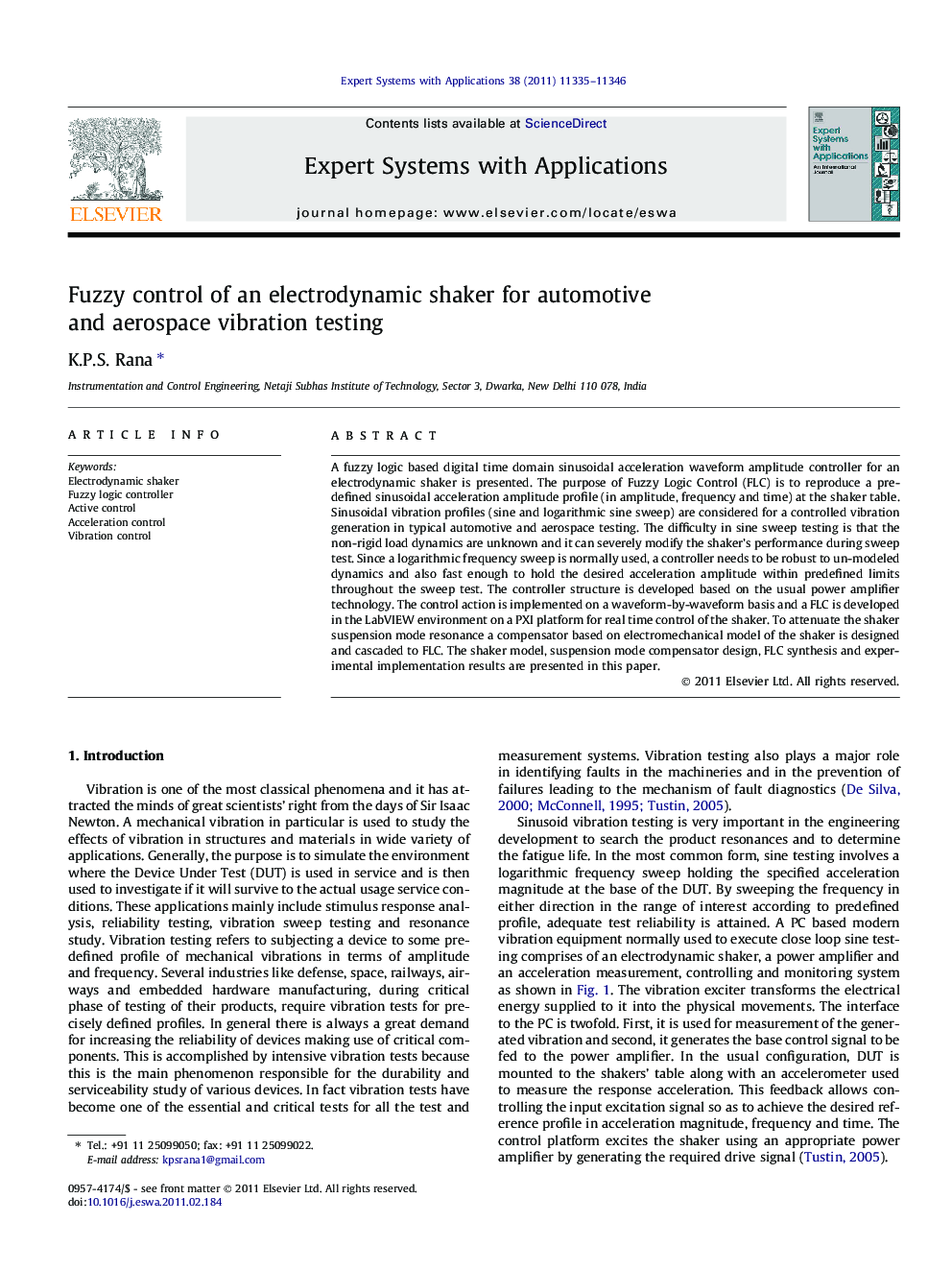| Article ID | Journal | Published Year | Pages | File Type |
|---|---|---|---|---|
| 385577 | Expert Systems with Applications | 2011 | 12 Pages |
A fuzzy logic based digital time domain sinusoidal acceleration waveform amplitude controller for an electrodynamic shaker is presented. The purpose of Fuzzy Logic Control (FLC) is to reproduce a pre-defined sinusoidal acceleration amplitude profile (in amplitude, frequency and time) at the shaker table. Sinusoidal vibration profiles (sine and logarithmic sine sweep) are considered for a controlled vibration generation in typical automotive and aerospace testing. The difficulty in sine sweep testing is that the non-rigid load dynamics are unknown and it can severely modify the shaker’s performance during sweep test. Since a logarithmic frequency sweep is normally used, a controller needs to be robust to un-modeled dynamics and also fast enough to hold the desired acceleration amplitude within predefined limits throughout the sweep test. The controller structure is developed based on the usual power amplifier technology. The control action is implemented on a waveform-by-waveform basis and a FLC is developed in the LabVIEW environment on a PXI platform for real time control of the shaker. To attenuate the shaker suspension mode resonance a compensator based on electromechanical model of the shaker is designed and cascaded to FLC. The shaker model, suspension mode compensator design, FLC synthesis and experimental implementation results are presented in this paper.
► An intelligent fuzzy logic based digital time domain sinusoidal acceleration waveform amplitude controller for an electrodynamic shaker is investigated. ► To attenuate the shaker suspension mode resonance a compensator based on electromechanical model of the shaker is designed and cascaded to fuzzy PI controller. ► The control action is implemented on a single waveform-by-waveform basis for the aerospace and automotive test frequency range. ► The shaker model, suspension mode compensator design, FLC synthesis and experimental implementation results are presented. ► Experimental results have demonstrated that this solution is capable of guaranteeing good reference tracking.
